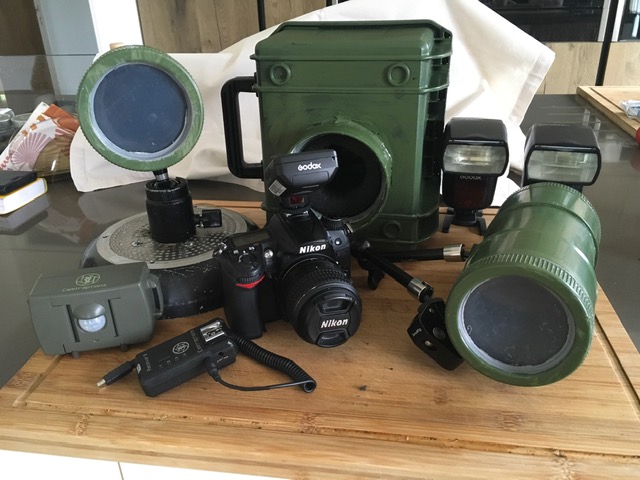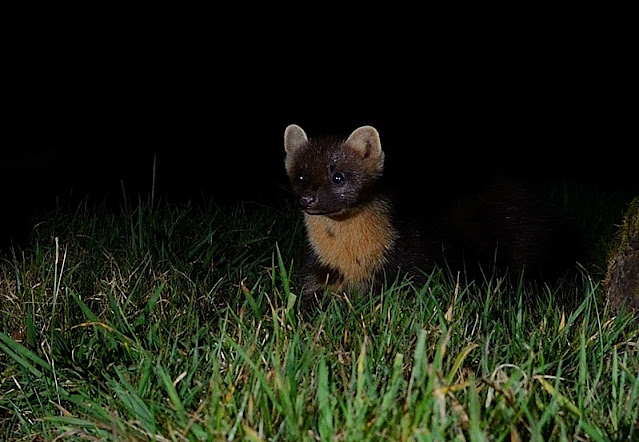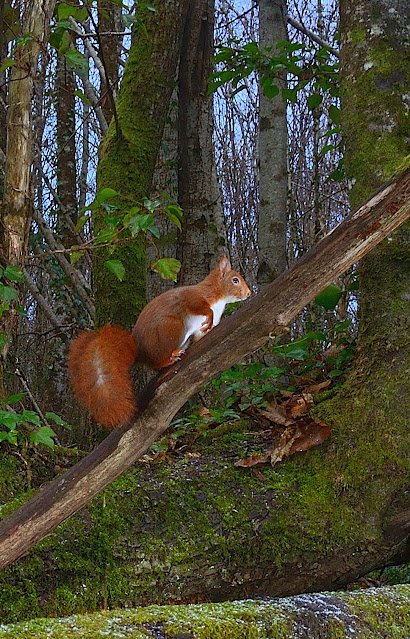My latest project, is to record the nocturnal wildlife of a local lake
Last year, I was lucky enough to gain access to a large local private lake, to photograph a family of Kingfishers. That project, gave me some stunning images of these wonderful birds and also the opportunity to explore the area more widely. The ability to set up my hides in different locations on the lake also gave me some great shots and views of the many birds and animals that call this lake home. From a wide range of smaller birds, through Herons, Cormorants and Buzzards, to animals such as Deer, Foxes, Squirrels and Badgers.
I had been thinking for a long time about building myself a DSLR Camera Trap (see my separate blog: Building a Camera Trap) and whilst I have regularly used this at other locations, I wanted to utilise it here, to record the 'nocturnal' wildlife at this lake. I knew that the lake supported a range of nocturnal animals, as I had seen 'scrapes' and paths through the undergrowth. So, armed with a few 'trail cams', I staked out lots of locations around the lake perimeter and waited to see what I could find.
 |
| This is the equipment that I use to get these nocturnal shots. The waterproof housings are all home made and essential for protecting the gear, which can be left in remote locations for weeks on end. |
Over a period of a few weeks, these trail cams, recorded regular sightings of Coypu, Badgers, Foxes, Deer, Pine Marten and even a Wild Boar! With this information, I was able to plan what I hoped, would be the best location to set up the 'Camera Trap'. This would be the 'barrage' (dam) that separated two different sections of the lake and formed a natural path for animals crossing from one side of the lake to the other.
One of the difficulties of 'camera trap' photography, is that the camera has to be pre-focused on a certain point, where you hope that your subjects may appear.......if they walk just a few inches too close, or too far away, the shot will be 'out of focus'. Add to this, the need for non intrusive lighting, which also needs to be focused on the same spot and you can start to imagine the problems! Fortunately, my passion for night time wildlife photography is driven by capturing elusive creatures, that simply cannot be achieved during daylight hours.
Whilst some of these animals can be spotted during the day, others are exclusively 'nocturnal' and images of them are rare to see. Either way, darkness makes them act differently and certainly gives a new perspective.
These Coypu are non-native and often considered a pest. Introduced to France in the 1920's for the fur trade, when the fashion for fur evaporated, these animals quickly colonised waterways. At around 50 cms in length and weighing 6 kilos, many people are frightened of these huge 'water rats'. The truth is, that they are misunderstood and gentle creatures and very inquisitive. They will allow me to get within a few feet, if I move slowly and quietly.
 |
| Coypu are vegetarians and gentle animals. |
Sanglier (Wild Boar) are common, but rarely seen, as they live in dense woodland and generally, only venture into the open after darkness. Unlike the Coypu, these animals can cause serious damage to land, whilst they dig up turf to try to get to food in the ground. They can dig up an area the size of wembley football pitch in just one night and should not be approached under any circumstances, especially if they have young with them. Sanglier are a large animal, weighing in at up to 100 kg and have been known to cause serious injury to people.
This particular shot, was taken from a distance of just 1.5 meters........i'm thankful that I was not behind the camera at the time!
Foxes will occasonally be seen during the day, but really come into their own after dark. Feeding on rodents, eggs, small birds, insects, fruit and carrion, they are nervous animals, which is hardly surprising, as more than 500,000 foxes are killed by hunters every year here in France. In fact, so many foxes are killed each year, that many environmentalists are now concerned about an inbalance in the natural ecosystem. - There are now calls to have the fox removed from the list of 'pests', as they control rodent populations. As usual, man makes his decisions on a whim and often lives to regret them!
This particular fox is a regular at the lake and often appears on my camera trap and trail cam footage.
 |
| This Fox is looking resplendent, with its coat in full mating condition.......well, it's important to look your best! |
Just 40 years ago, the European Otter was extinct in many parts of France and less than 1500 were believed to survive nationally. Nowadays, the situation is not hugely different, but they are making a comeback. Of all the creatures that I expected to see on this lake, the Otter was the last on a very long list. In fact, it was so far down the list, that quite simply, I never thought that I would see one anywhere in the wild.
Otters are solitary animals and only come together for a very short period (perhaps just two, or three weeks every year) to mate. Their territory can be 20-30 kms, so to photograph (albeit badly) a pair at this lake, was beyond my wildest dreams.
Needless to say, they had no idea that I had the camera set up, and were slightly 'out of range' of my focus point. However, to capture these images was a real bonus and great news for the local wildlife organisations who had not had any sightings of Otters in years.
Pine Marten are difficult to photograph, due to the speed that they travel through the trees and undergrowth. I have lots of 'trail cam' footage of them, but trying to get a 'still' shot is very hard. The combination of low shutter speed (1/160) to allow enough light into the camera and an f-stop of f8 to give some depth of field, both conspire to make photographing fast moving subjects at night almost impossible. Add to this, low power flash (1/8 power), so as not too 'blind', or spook the animal and you start to see the problem!
One trick, is to smear peanut butter on a focus area, in the hope that it may slow down the Pine Marten (they love peanut butter), but my personal experience, is that it has not worked so far. I'm still waiting for the shots that i'm after, but the following images of these Pine Marten , proves that they are in the area.
We are fortunate to only have Red Squirrels in France and I often see them playing in the trees behind my hide, totally oblivious to my presence. Unfortunately for the Squirrels, they are a favourite prey of Pine Marten, so night time brings new dangers.
The Genet, is one of the most elusive of all French nocturnal animals and very few people have seen one. They live deep in the woods and feed mainly on rodents, birds, lizards and insects. Its important to have water nearby, so a wooded area with a lake is ideal. I have been fortunate to photograph a number of these animals, including one of my favourite shots of all time. Although not taken at this location, I have included it below, as it is a unique photo of a Genet with its prey.
 |
| a beautiful Genet passing by next to the lake. |
 |
| Taken at a nearby location, these shots of a Genet with prey (a Wood Mouse) are extremely rare! |
I have yet to locate the set of this Badger, but hope that my research in the coming weeks will lead me to it. Of course, it is essential that the welfare of the animals is paramount and they should not be disturbed, especially near their sets.
This particular project has taken 3 months so far and is likely to take many more months before it is brought to a conclusion. In the meantime, I still have my 'trail cams' and hides at the location and continue to photograph the daytime creatures.
The Kingfishers that originally brought me to this lake are still around and continue to add some wonderful colour to the current grey winter days.
If you enjoy my blogs, please share them on facebook etc.
Older blogs can be viewed by clicking on the ☰ symbol, at the top of the home page.



















Wow Glynn, some of these photos I have already seen of yours, but seeing them in your blog together makes me realise how successful you have been. Not sure I have seen the otter photos, amazing and great news. Keep up the good work. A Bientôt Diane
ReplyDelete